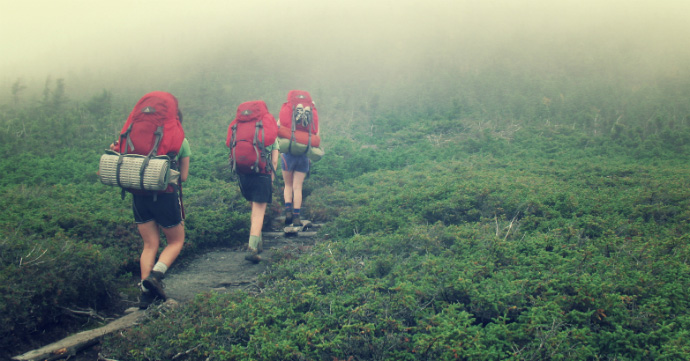
“How true Daddy’s words were when he said: all children must look after their own upbringing. Parents can only give good advice or put them on the right paths, but the final forming of a person’s character lies in their own hands.”
– Anne Frank
Creativity. Fairness. Humility. Forgiveness. Honesty. Spirituality. Optimism. These are but a few of a long, long list of traits that make up that slippery thing we refer to as a person’s character. The Merriam-Webster Dictionary definitions are a bit more refined: “One of the attributes or features that make up and distinguish an individual”; or a “main or essential nature especially as strongly marked and serving to distinguish.” It’s really a matter of definition itself.
These are the virtues or imperfections that make up and differentiate each and every individual the world over, and it just so happens that documentary film is an extraordinary form for highlighting the characteristics that make people extraordinary. In celebration of Character Day, these six films explore the vast spectrum of human character traits.
In the incredible NOTES ON BLINDNESS, professor John Hull is depicted as an exemplar of perspective, a love of learning, and perseverance as we witness his journey into darkness as he loses his sense of sight midway through his career at the University of Birmingham. Using his personal audio journals and interviews with his wife, the film allows us to experience how his view of everyday life drastically changed, yet thanks to his love of research and education, he found new ways to navigate the woolly world of academics. Blindness be damned.
Death row inmate Nick Yarris, the magnetic subject of the winding crime yarn THE FEAR OF 13, is the living definition of adaptability, forgiveness, and humility. Structured as a juicy soliloquy recounted by Yarris himself, his youthful life of crime and knack for telling white lies led him to be nailed for a murder he didn’t commit. Yet, his dire situation did not break him. Behind bars he found clemency, and in books he found the knowledge that allowed him to change.
Another individual put behind bars, Chinese activist Ye Haiyan, the namesake and soul at the center of HOOLIGAN SPARROW, was unjustly imprisoned for her dissent of sexual abuse and the inaction against it by the Chinese government. Her selfless bravery and raw honesty made her an international icon of resistance at the cost of her own freedom.
13TH deals with the dark side of the U.S. prison system, as it examines the history of racial inequality through today’s policy of forcing imprisoned persons to perform unpaid work. Speaking with intellectual acumen and a deep sense of empathy for their fellow men and women, human rights activists Angela Davis, Bryan Stevenson, Van Jones, and the many others interviewed throughout this monumental film are models of social responsibility, intelligence, fairness, and leadership. Without powerful voices for change like these, the world would be a far graver place.
As an inventive work of personal memoir, CAMERAPERSON reveals filmmaker Kirsten Johnson’s precarious perspective behind the lens as she attempts to capture the heartrending and harrowing events taking place before her eyes. It’s both an immersive depiction of humanity in all its messiness and a powerful portrait that regards its director as an empathetic, trusting, and ultimately, wildly creative individual hungry for adventure.
Similarly, SKY LADDER sees the internationally renowned artist Cai Guo-Qiang traveling the world, creating works of explosive ingenuity—literally—in experimental gunpowder paintings and large-scale fireworks displays. Through his work he attempts transcendence, revealing an exceptional man driven by ambition and an appreciation of beauty.
In celebration of Character Day, commemorate the occasion with this series of films that exude character through and through, investigating the essence of what makes us each human in our own unique ways.
Wisdom – Notes On Blindness
Following the award-winning short film of the same name, the feature version of NOTES ON BLINDNESS documents John Hull’s extraordinary journey into “a world beyond sight,” utilizing his own audio material and a creatively inspired take on the documentary medium in order to understand his transition to blindness.
Courage – Hooligan Sparrow
State surveillance. Harassment. Imprisonment. HOOLIGAN SPARROW follows the Chinese activist Ye Haiyan, AKA Sparrow, as she seeks justice for six school girls who were sexually abused by their principal and continues fighting for the rights of sex workers.
Humanity – Cameraperson
As a visually radical memoir, CAMERAPERSON draws on the remarkable footage that filmmaker Kirsten Johnson has shot for other filmmakers and reframes it in ways that illuminate moments and situations that have personally affected her.
Justice – 13th
America makes up 5% of the world’s population, yet locks up 25% of the world’s prisoners. 40% are black men. 13TH gives an in-depth look at the prison system in the United States and how it reveals the nation’s history of racial inequality.
Temperance – The Fear of 13
THE FEAR OF 13 is a psychological thriller, where Nick, a death row inmate, petitions the court to be executed. As he goes on to tell his story, it gradually becomes clear that nothing is quite what it seems. His story has all the twists and turns of classic crime drama with a final shocking twist casts everything in a new light.
Transcendence – Sky Ladder
The Sky Ladder is a 1,650-foot ladder of fire climbing into the skies above artist Cai Guo-Qiang’s hometown. Told through the artist’s own words and those of family, friends, and observers, the film tracks Cai’s meteoric rise and examines why he engineers artworks that loom as far as the eye can see.

“Life can only be understood backwards; but it must be lived forwards.”
Søren Kierkegaard
In today’s digitized world of constant connectivity, we’re always in anticipation, searching for the next new thing, scrolling for the latest updates, anxious for the next notification. Most of us hurtle through our lives at what often feels like breakneck speed, rarely slowing down, taking stock and simply reflecting. As the famed Danish existentialist philosopher Søren Kierkegaard astutely noted, reflecting is crucial to understanding our lives and the world around us.
Even from cinema’s simple beginnings, documentaries have served as a mirror to the world. With the Lumière brothers’ EMPLOYEES LEAVING THE LUMIÈRE FACTORY, people could—for the very first time—see themselves on screen moving in time and space, allowing them to think about and reflect on what these images could mean to them individually, as well as socially.
This sense of reflection is one of the great joys that documentary cinema has enabled, but since cinema’s inception back in 1885, filmmakers have made great strides in utilizing reflection as a formal instrument to delve deeper into all sorts of topics.
Most recently, filmmaker Kirsten Johnson repurposed footage she shot as a cinematographer on other people’s films to function as a wholly original kind of collagic memoir in CAMERAPERSON. While at the same time, Raoul Peck utilized unpublished works of James Baldwin and archival interview clips from the man himself to powerfully reflect on the current state of racial injustice in the United States with I AM NOT YOUR NEGRO.
Most of Errol Morris’s career centers on his ability to use direct interviews with his subjects to reflect on pivotal events in their lives. This tactic proves transcendent in his masterpiece THE FOG OF WAR: ELEVEN LESSONS FROM THE LIFE OF ROBERT S. McNAMARA, in which McNamara attempts to open up about his military career. Men learn the art of meditation in both Jenny Phillips, Andrew Kukura, and Anne Marie Stein’s THE DHAMMA BROTHERS and Philip Gröning’s INTO GREAT SILENCE. In the former, men meditate in order to cope with being in prison, while in the later, monks spend nearly their entire lives in states of silent reflection in observance of their religious tenets.
And in what might be the ultimate act of documentary reflection, every seven years since 1964, the subjects of Michael Apted and Paul Almond’s 56 UP reconvene on screen for a cinematic update on their lives, revealing heartrending relatability and unfathomable events that turn up as life unceasingly marches on.
If you’ll allow them to, these six films will act as a mirror. Embracing their formal complexities, they thoroughly explore how the medium of documentary cinema can be used to reflect on the world we move through day in and day out with stunning clarity.
I Am Not Your Negro
James Baldwin’s book Remember This House was to be a revolutionary, personal account of the lives and assassinations of three of his close friends: Medgar Evers, Malcolm X, and Martin Luther King, Jr. At the time of Baldwin’s death in 1987, he left behind only 30 completed pages of this manuscript. Filmmaker Raoul Peck envisions the book James Baldwin never finished.
The Dhamma Brothers
A maximum-security prison in Alabama is dramatically changed by the influence of an ancient meditation program. THE DHAMMA BROTHERS tells a tale of human potential as it documents the stories of the Donaldson Correctional Facility inmates who set out on an arduous and intensive path towards emotional freedom.
Cameraperson
As a visually radical memoir, CAMERAPERSON draws on the remarkable footage that filmmaker Kirsten Johnson has shot for other filmmakers and reframes it in ways that illuminate moments and situations that have personally affected her.
The Fog of War: Eleven Lessons From The Life of Robert S. McNamara
THE FOG OF WAR is a 20th-century fable, the story of an idealist who saw his dreams and ideals challenged by the role he played in history, as he both witnessed and participated in many history-altering events.
Into Great Silence
INTO GREAT SILENCE is an intimate portrayal and examination of the life of the devout monks who live within the Grande Chartreuse, the head monastery of the reclusive Carthusian Order situated in the French Alps.
56 Up
Initially pitched as a documentary delving into the British class system, 56 UP revisits the same group of people every 7 years, from age 7 to 56, interviewing each to discover just what the passing of time reveals and exposing their hopes and disappointments to a vast public.
This playlist is inspired by our friends at Holstee and their December theme of Reflection.

“A mentor is someone who allows you to see the hope inside yourself. A mentor is someone who allows you to know that no matter how dark the night, in the morning joy will come. A mentor is someone who allows you to see the higher part of yourself when sometimes it becomes hidden to your own view.”
Oprah Winfrey
Those who move through life without the guidance, support, and inspiration of mentors and muses are few and far between. Everyone has at some point looked up to someone in the public eye and gleaned a greater sense of one’s self, while most have, in critical moments, been taken under another’s wing and given a bit of direction in life – whether that person be a teacher, coach, neighbor, community leader, or maybe even that record store clerk who gave you a musical recommendation that changed your perception of the world forever. You never know who or when someone might leave their mark. These are the folks that not only help mold one’s sense of being, but light that torch from within that guides us forward, inspiring and challenging us to be better, stronger, and wiser than we thought possible.
And who better to set such an example than Oprah? An immensely influential figure of feminine power, success, grace, and generosity, she’s inspired countless people around the globe and even has a brief appearance in Tiffany Shlain’s celebratory 50/50: RETHINKING THE PAST, PRESENT & FUTURE OF WOMEN + POWER, a short that recontextualizes the historical role of women in positions of political power and highlights how mentorships can bear immense societal returns on their emotional investments. The dynamic, fearless women featured in Shlain’s film serve as female figures of motivational inspiration, challenging society’s gender norms while the women it features look to one another for counseling and guidance.
Thanks to the media, body image activist Taryn Brumfitt has also been setting a positive example for women the world over, as can be witnessed in her uplifting travel doc EMBRACE. In her travels she visits dignified women of all backgrounds and body types, each of whom set a new example of how women’s bodies can be beautiful in their uniqueness along the way. Likewise, in VESSEL, doctor and Greenpeace worker Rebecca Gomperts casts off in a rugged little ship with her newly formed organization Women On Waves, which provides abortion services in countries where it is illegal. The result? She’s inspired women to take action for themselves and to form grassroots activist groups around the globe.
Mentorship bubbles up from the heart of THE REVOLUTIONARY OPTIMISTS, in which a former lawyer named Amlan Ganguly works with children from the slums of Kolkata in hopes of bringing education, recreation, and hope to a portion of Indian society that has long been left to the gutter. With encouragement from Ganguly, the children find self-confidence and the ambition to engage with their community to constitute real change.
Up north, gender norms are challenged as Iranian physics teacher Asghar Kabiri serves as mentor and fellow star gazer to Sepideh Hooshyar, a teenage girl who dreams of becoming an astronaut in the heartrending SEPIDEH: REACHING FOR THE STARS, while the Mongolian set THE EAGLE HUNTRESS sees 13-year-old Aisholpan, with help from her father and mentor Nurgaiv, train to become the first female in 12 generations of her Kazakh family to become an eagle hunter. Without the generous guidance and encouragement from those older and wiser, where would they be today?
These six wonderful films celebrate mentors and muses for all their affirmative influence on us, inspiring us to better ourselves, seek out new experiences, and engage with our communities in new, overwhelmingly positive ways.
50/50: Rethinking the Past, Present, and Future of Women in Power
What will it take to get to a 50/50 world—not just in politics and boardrooms, but to truly shift the gender balance to be better for everyone? Through a cinematic-thought-essay style, the film explores where we really are on the greater arc of history of women and power.
Embrace
When Body Image Activist Taryn Brumfitt posted an unconventional before-and-after photo in 2013 it was seen by more than 100 million people worldwide and sparked an international media frenzy. EMBRACE follows Taryn’s crusade as she explores the global issue of body loathing, inspiring us to change the way we feel about ourselves and think about our bodies.
Vessel
VESSEL depicts medical doctor and Greenpeace worker Rebecca Gomperts who, horrified by the realities created by anti-abortion laws around the world, provides abortions on a ship in offshore waters. Her project – Women on Waves – becomes a media frenzy, faced with governmental, religious, and military blockades.
The Revolutionary Optimists
THE REVOLUTIONARY OPTIMISTS follows former lawyer Amlan Ganguly who empowers children from the slums of Kolkata to become agents of change – battling poverty and transforming their neighborhoods with dramatic results.
Sepideh: Reaching for the Stars
Can a young Iranian woman become an astronaut? SEPIDEH: REACHING FOR THE STARS is the story of a remarkable teenage girl named Sepideh who defies societal expectations and courageously works to make her dream come true.
The Eagle Huntress
Set against the breathtaking expanse of the Mongolian steppe, THE EAGLE HUNTRESS follows 13-year-old Aisholpan, the first female in 12 generations of her Kazakh family training to become an eagle hunter.

“Man must evolve for all human conflict a method which rejects revenge,
aggression and retaliation. The foundation of such a method is love.”
Martin Luther King, Jr.
Humans are prone to conflict. Just look at any history text and you’ll quickly find a laundry list of clashes between clans and countries, personalities and militaries, family members and brethren. But if we’ve learned anything from the past it’s that perpetual warfare does no one any favors. It is with an empathetic eye, careful consideration of concessions and a committance down the long hard road toward reparations and forgiveness that mankind may move forward.
But first, conflicts must be resolved. In some cases communities can transform through the dedication of courageous individuals willing to take a radical approach such as the streetwise Chicago group at the center Steve James’ THE INTERRUPTERS who employ their former involvement in violence and crime to dissuade others. Or Grace Lee Boggs whose story is told in AMERICAN REVOLUTIONARY: THE EVOLUTION OF GRACE LEE BOGGS, a pioneering first generation Chinese-American political activist and champion of the Black Power movement who continued to blaze a transformative path until she reached 100 years old.
Sometimes things become so intolerable for both sides of a conflict, that to continue fighting would be irreparably detrimental. Thus, pride must be swallowed and a truce must be sought in salvageable compromise. The ordinary Liberian women who populate Gini Reticker’s PRAY THE DEVIL BACK TO HELL become so fed up with the ongoing civil war in their country that they reach out to one another to bring an end to the conflicts and a new, peaceful start for their people, while in Lisa Fruchtman and Rob Fruchtman’s SWEET DREAMS a remarkable group of Rwandan women emerge from the devastation of the 1994 genocide to forge a new future for themselves through the therapeutic nature of drumming and the soul-soothing virtues of ice cream entrepreneurship. Compromises are made and the long process of reconciliation begins.
For some, that process can painfully linger for decades. Joshua Oppenheimer’s unflinching THE LOOK OF SILENCE deals explicitly with the inability of the people who lived through the Indonesian mass killings of ‘65-’66 to reconcile with the horrific events that tore communities apart and left victims to live amongst the murderers that took the lives of their kin. And while not as emotionally charged, Fredrik Gertten’s BIKES VS CARS attempts to reconcile a world in which the car industry is wreaking havoc on our environment while bikes remain overlooked as an obvious solution for clean and sustainable daily transportation.
Conflict resolution may not be easy, but it is of utmost necessity if we wish to see peace for the generations to come in our wake. These six films form a framework of empathy and reconciliation to strive for by example.
The Interrupters
THE INTERRUPTERS tells the moving and surprising story of three brave people who aim to protect their Chicago communities from the violence they once employed. This film is an intimate view of violence, its causes, and its interrupters.
American Revolutionary: The Evolution of Grace Lee Boggs
By plunging us into writer, activist, and philosopher Grace Lee Boggs’s lifetime of vital thinking and action, and traversing the major U.S. social movements of the last century, AMERICAN REVOLUTIONARY: THE EVOLUTION OF GRACE LEE BOGGS takes us on a journey into the power of ideas and the necessity of expansive, imaginative thinking to propel societal change.
Sweet Dreams
SWEET DREAMS follows a remarkable group of Rwandan women as they emerge from the devastation of the 1994 genocide to create a new future for themselves through drumming and ice cream. In the words of Kiki Katese, the founding member, “Because of our history, people know how to fight against, but not for. We want to change that equation.”
Pray the Devil Back to Hell
PRAY THE DEVIL BACK TO HELL chronicles the story of the Liberian women who came together to end war and bring peace to their country. Armed only with white T-shirts and the courage of their convictions, ordinary mothers, grandmothers, aunts and daughters demanded a resolution to the country’s civil war.
The Look of Silence
Through its footage of perpetrators of the 1965 Indonesian genocide in THE ACT OF KILLING, a family of survivors discovers how their son was murdered and the identities of the killers. THE LOOK OF SILENCE serves as a powerful companion piece that initiates and bears witness to the collapse of fifty years of silence.
Bikes vs. Cars
BIKES VS CARS investigates the daily global drama in traffic around the world, meeting with bike activists in Sao Paulo and Los Angeles who struggle to be granted space, and surveying cities like Copenhagen and Amsterdam, where cycling is an integral part of city life, all while contemplating the revolutionary changes possible if more cities moved away from car-centric models.
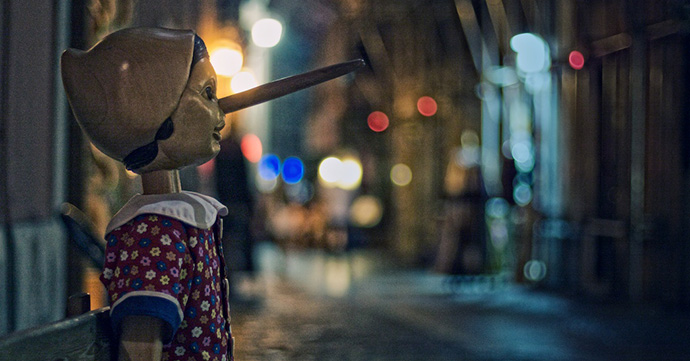
“Am I a good person? Deep down, do I even really want to be a good person, or do I only want to seem like a good person so that people (including myself) will approve of me? Is there a difference? How do I ever actually know whether I’m bullshitting myself, morally speaking?”
― David Foster Wallace, Consider the Lobster and Other Essays
When is it ok to lie? Is it ever? What about those seemingly harmless little fibs we’ve all passed off as the truth once in blue moon as not to make a bad impression, to avoid insulting someone, or to shield a loved one from unnecessary grief? Are those ok? If so, where does the line begin to blur between good intentions and plain deception?
There could be a whole sub-genre of documentaries devoted to this question. Most of Errol Morris’ oeuvre is devoted to the notion of self-deception and its explication across the ripples of personal and political catastrophe, while countless other filmmakers peel back the falsehoods and fabrications of those looking to leverage their way up social ladders the world over, such as in Alex Gibney’s THE ARMSTRONG LIE, where former biking world golden boy Lance Armstrong’s long denial of using performance enhancing drugs to become the biggest name in the history of the sport is stunningly shattered. Or on a smaller scale, the ruthless door-to-door bible salesman of the Maysles Brothers’ vérité classic SALESMAN exploit low-income families by bending the truth to make that all important extra buck.
Somewhere in between is ART AND CRAFT’s art forger Mark Landis, who duplicates masterworks and donates them to museums for the sheer satisfaction of duping the pros into believing they are authentic. There is certain fear induced adrenaline rush one experiences when attempting to pull the wool over one’s eyes, as there are no guarantees and success only comes with skill. Henry Joost and Ariel Schulman’s CATFISH plays with this notion of thrill seeking through baiting potential lovers via the digital divide. In the age of the internet, one’s identity can be almost wholly invented, while the truth is merely an option to dole out only if completely necessary. Is this entertainment or self preservation?
Some films, such as Vikram Gandhi’s Indian guru hoaxing KUMARÉ, employ deception as a means to greater, altruistic enlightenment. But lying, even with good intentions, is inherently malicious. When the truth finally comes to the fore, feelings will be hurt and trust, no matter how intimate, will be shattered. No films deal with this idea more intimately than Sarah Polley’s STORIES WE TELL, in which the filmmaker’s own mother purposefully obscured her bloodline for the sake of protecting the immediate family unit.
Were these people right in attempting to pass off untruths as gospel? Does this make them a bad people or do their intentions exonerate them? These six films play with the idea of lying and the trick balance between decency and deceitful. Are you a good person?
Kumaré
KUMARÉ is a documentary about a man who impersonates a wise Indian Guru and builds a following in Arizona. At the height of his popularity, the Guru Kumaré must reveal his true identity to his disciples to unveil his greatest teaching of all.
The Armstrong Lie
Sports legend Lance Armstrong’s improbable rise and ultimate fall from grace. Using interview footage from before and after Armstrong’s doping admission, THE ARMSTRONG LIE explores one of the biggest lies in sports history.
Stories We Tell
STORIES WE TELL is a highly original documentary that explores how we construct our own reality through stories. Sarah Polley’s family and friends weave different narratives into a complex portrait of her mother who died when Sarah was eleven.
Art and Craft
Beginning as a cat-and-mouse art caper concerning one of the most prolific art forgers in U.S. history, ART AND CRAFT is rooted in questions of authorship and authenticity, eventually giving way to an intimate story of mental health and the universal need for community, appreciation, and purpose.
Salesman
SALESMAN follows four door-to-door salesmen that walk the line between hype and despair as they ply across the American Northeast and Miami trying to sell expensive Bibles to low-income families.
Catfish
In this tale of electronic attraction, love, deceit and forgiveness, the dark reality of how far one woman was willing to go to soothe her emotional aches and pains is unearthed, and CATFISH asks the question: what exactly can we trust in this age of virtual connections?
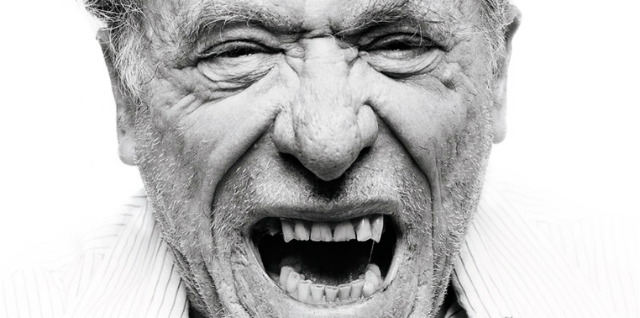
“You’ve got to burn straight up and down and then maybe sideways for a while and have your guts scrambled by a bully and the demonic ladies, you’ve got to run along the edge of madness teetering, you’ve got to starve like a winter alleycat, you’ve go to live with the imbecility of at least a dozen cities, then maybe maybe maybe you might know where you are for a tiny blinking moment.” – Charles Bukowski
Much like Bukowski himself, who spent much of his 73 years in the crazed haze of an alcohol infused fervor, enduring the whoas and joys of a starving artist with the emotional and creative extremes that come with such a provocative lifestyle, artists throughout history have often embraced all forms of madness in hopes of harnessing wild eyed authenticity in the name of art and purpose. For many, suffering and beauty are two sides of the same coin.
Non-fiction cinema is packed to the gills with such characters, from the men and women behind the cameras to those who’ve submitted themselves freely to be taken in by our watchful gaze. Like the wildly empathetic, grizzly obsessed nature-boy whom lost his life to the jaws of those he so loved in GRIZZLY MAN, the manic-depressive emotionally raw singer/songwriter at the heart of THE DEVIL AND DANIEL JOHNSTON, or the OCD-afflicted world travelling freedom fighter of POINT AND SHOOT, many are propelled to document their own unstable existences, unknowingly reaching out on their own to the anonymous unknown as if the visual documentation of one’s life itself might bring some form of lucidity to an otherwise mad caper. As we see, autobiography doesn’t seem to make their journey through life any easier, yet they continue nonetheless.
Others merely embrace their lunacy, knowing all along that their life’s endeavors are those of idealistic moonstruck dreams. The tightrope walker of MAN ON WIRE damns all logic, personal safety, and even legality in an act of singularly spectacular physical performance, while the abiding filmmaker of AMERICAN MOVIE, eyes deep in debt and personal crises, obsessively crusades in the name of his perfect picture. And much like Bukowski himself, the starving outsider artist at the center of ALMOST THERE has lived a life fueled and haunted by mental volatility in the pursuit of artistic revelation. Sometimes one must let go of reason and stability to reach out for something greater.
The following six films bring us closer to that “edge of madness” that Bukowski so lovingly speaks of, allowing us a view of the world detached from logic through the eyes of dreamers and madmen.
Man on Wire
MAN ON WIRE explores tightrope walker Philippe Petit’s daring, but illegal, high-wire routine performed between the twin towers of New York City’s World Trade Center in what some consider “the artistic crime of the century”.
Grizzly Man
In GRIZZLY MAN Werner Herzog explores the life and death of Timothy Treadwell who lived among the grizzly bears of Alaska for 13 consecutive summers until being attacked and eaten by a bear in 2003.
Almost There
For filmmakers Rybicky and Wickenden, Peter Anton’s home is a treasure trove, a startling collection of unseen and fascinating paintings, drawings, and notebooks, not to mention Anton himself. ALMOST THERE is a remarkable journey following a gifted artist through startling twists and turns.
American Movie
The story of filmmaker Mark Borchardt, his mission, and his dream. Spanning over two years of intense struggle with making a movie, family issues, financial decline, and personal crisis, AMERICAN MOVIE is a portrait of ambition, obsession, excess, and one man’s formidable quest for the American Dream.
Point and Shoot
With a gun in one hand and a camera in the other, 28-year-old OCD-afflicted Matthew VanDyke set off on a 35,000-mile motorcycle trip through Northern Africa and the Middle East, where he undergoes a self-described “crash-course in manhood.”
The Devil and Daniel Johnston
THE DEVIL AND DANIEL JOHNSTON follows the long and winding road traversed by Daniel Johnston – manic-depressive singer/songwriter/artist – on his way from childhood to manhood in this portrait of madness, creativity and unrequited love.
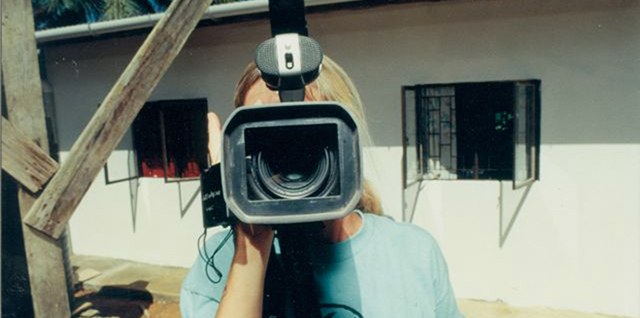
“The documentary form is one of the freest in cinema, while also being gloriously beholden to the ineffable weight of the real world and the delicate needs of real lives. This tension between limitless formal possibility and necessary moral constraint gives nonfiction a rare power…” – Robert Greene
People often forget that documentary is not a film genre, but the formal result of entrusting truth with enough structure to tell a story cinematically. Within non-fiction filmmaking there are documentaries that span the spectrum of genre, from war film (see Restrepo) to sports thriller (Hoop Dreams) through absurdist comedy (Gates of Heaven) and beyond, but when compared to these films’ fictional counterparts, there are a series of formal styles that documentaries most often embrace as the result of filmmaker intention and situational circumstance that are strictly inherent of the form, most notably the talking head, cinéma vérité and the archival compendium.
In academia these formal styles are broken down further into six types of cinematic non-fiction – poetic, expository, observational, participatory, reflexive and performative. While it’s true that some films may ride the line between the various types of documentaries, most can be categorized quite easily.
Poetic docs can be identified by their lack of characterial focus and narrative structure, often relying instead upon a lyrically associative form, impressionistic and essayistic. Godfrey Reggio’s monumental, environmentally minded KOYAANISQATSI is a perfect example. Riffing on the aesthetics of the traditional city symphony, the film comments on the impact of modernization on our planet through poetics rather than exposition. Its formal counterpoint then would be the expository smash hit MARCH OF THE PENGUINS, which documents the life of penguins with the god-like guidance of its narrator Morgan Freeman.
As one might expect, observational docs are typified by their hands off approach to filming their subjects, taking pains to remain non-interventional and typically remain free of any narrative commentary or the like. Philip Gröning’s INTO GREAT SILENCE is a wonderfully austere example of this style, simply documenting the routines of the devout monks who live within the Grande Chartreuse. The opposite of this approach might be exemplified by the participatory FINDING VIVIAN MAIER, in which John Maloof, the film’s co-director, places himself within the detective narrative of the posthumous discovery of the street photographer Vivian Maier. As in all participatory films, the filmmaker’s presence within the narrative is essential to the telling of the story.
Harder to discern is the reflexive and performative doc. While the Maysles brothers made a name for themselves as pioneers of direct cinema, their singular film GREY GARDENS reminds audiences to remember to question what they are seeing on screen. By drawing attention to the fact that what one is watching is in fact a film of questionable representation via performance and construction, they pushed the reflexive doc forward. Comparatively, Joshua Oppenheimer’s shocking depiction of the lingering cultural effects of the Indonesian killings of 1965–66, THE ACT OF KILLING is the quintessential performative doc. Pushing the limits of subjective experience by having his subjects, each former death-squad leaders, literally perform reenactments of their previous acts of murder, the film uses formal experimentation and personal accounts to simultaneously conjure visceral emotional responses while commenting on the horrific political situation that remains in Indonesia.
Though just a divisional taste of the forms that documentary films may take, these six films give you a glimpse of academia. As you take in more non-fiction films, try to discern which of these categories films fit in – poetic, expository, observational, participatory, reflexive or performative?
Koyaanisqatsi
Created between 1975 and 1982, KOYAANISQATSI (“life out of balance”) is an apocalyptic vision of the collision of two different worlds — urban life and technology versus the environment – complete with musical score by Philip Glass.
March of the Penguins
MARCH OF THE PENGUINS documents the emperor penguins annual journey taking them hundreds of miles across the brutal Antarctic landscape through the harshest weather conditions on earth – risking starvation and attack by dangerous predators in the quest for love and life.
Into Great Silence
INTO GREAT SILENCE is an intimate portrayal and examination of the life of the devout monks who live within the Grande Chartreuse, the head monastery of the reclusive Carthusian Order situated in the French Alps.
Finding Vivian Maier
The discovery of over 100,000 photographs hidden away in various storage lockers unveiled the story of Vivian Maier, a mysterious nanny, who is now considered one of the 20th century’s greatest street photographers.
Grey Gardens
In GREY GARDENS we meet Big and Little Edie Beale—mother and daughter, high-society dropouts, reclusive cousins of Jackie O.—thriving together amid the decay and disorder of their ramshackle East Hampton mansion.
The Act of Killing
THE ACT OF KILLING follows former Indonesian death squad leaders as they are challenged to re-enact the real-life mass killings in the cinematic genres of their choice, from classic Hollywood crime scenarios to lavish musical numbers.

“When the girl returned, some hours later, she carried a tray, with a cup of fragrant tea steaming on it; and a plate piled up with very hot buttered toast, cut thick, very brown on both sides, with the butter running through the holes in great golden drops, like honey from the honeycomb. The smell of that buttered toast simply talked to Toad, and with no uncertain voice; talked of warm kitchens, of breakfasts on bright frosty mornings, of cozy parlor firesides on winter evenings, when one’s ramble was over and slippered feet were propped on the fender, of the purring of contented cats, and the twitter of sleepy canaries.” ― Kenneth Grahame, The Wind in the Willows
We love docs, and therefore we would not necessarily like to be lumped together with a certain non-fiction phenomena that centers around things such as games and thrones. However, we all have to face one fact: winter is coming! The days are getting shorter, the temperatures are dropping, there will be rain and wind and eventually there will also be snow. In addition, there will be the same complaints about the same issues just as last year and every other year before. And while all that combined sounds less than inviting, there is a lot to get out of this time of the year. Mostly: endless coziness. It is the feeling that Kenneth Grahame captured so very successfully, the feeling that gives us this tingle, pleasantly spreading from the back of our heads, comforting us, warming us, calming us.
So, while we watch the weather doing whatever it wants to do, we can have the best of times at home. If it’s too dark, light a candle. In case of shivering, put on some comfy, heavy knit. Is it raining? Perfect – cuddle up on the couch with a cup of tea and, yes, watch a doc!
Luckily, we might be able to help you cozy up on your winter days even more. Whether it’s the beautiful story of a horse touching the lives of many, the wonder of finding out the musician you’ve always admired is still alive, not knowing he’s so loved, or a heartwarming tale of a journey hundreds of miles across the brutal Antarctic landscape, undertaken to continue the circle of life – the following six films will make you feel the unique spirit of the season.
Dark Horse
DARK HORSE is the inspirational true story of a group of friends from a former mining village in the Welsh countryside who decide to take on the elite “sport of kings” and breed themselves a racehorse.
Searching for Sugar Man
This Academy Award-winning documentary takes viewers on a surprising journey from one side of the world to another to remind us that, sometimes, the greatest heroes are the unlikely people living right next door.
March of the Penguins
MARCH OF THE PENGUINS documents the emperor penguins annual journey through the harshest weather conditions on earth – risking starvation and attack by dangerous predators in the quest for love and life.
Alive Inside
ALIVE INSIDE follows social worker Dan Cohen as he fights against a broken healthcare system to demonstrate music’s ability to combat memory loss and restore a deep sense of self to those suffering from it.
Babies
BABIES joyfully captures the earliest stages of the journey of humanity that are at once unique and universal to us all.
In the Shadow of the Moon
Captivating scenes include hauntingly lovely moonscapes, thrilling launches, exploration of the Moon’s surface, engineers and astronauts designing a space aircraft with tools and technology that seem quaint today, and the reactions of people around the world who came together to see for the first time—a man walking on the Moon.

“Do not worry in the least about yourself, leave all worry to God,’ – this appears to be the commandment in all religions. This need not frighten anyone. He who devotes himself to service with a clear conscience, will day by day grasp the necessity for it in greater measure, and will continually grow richer in faith. The path of service can hardly be trodden by one who is not prepared to renounce self-interest, and to recognize the conditions of his birth. Consciously or unconsciously, every one of us does render some service or other. If we cultivate the habit of doing this service deliberately, our desire for service will steadily grow stronger, and will make not only for our own happiness but that of the world at large.” ― Mahatma Gandhi
Since the dawn of man, humanity has sought to improve upon themselves as moral beings through the belief and worship of a higher power. Religions, no matter what the creed, have always required their devotees to make personal sacrifices in the name of righteousness and holy veneration. Some of these acts are relatively simple, such as giving up meat for the Catholic Lent, or they can be more demanding like fasting from dawn until sunset during the Islamic month of Ramadan. At the extreme end of this spectrum, as tribute, the Mayans actually sacrificed their own people to the gods, throwing them into cavernous cenotes believed to be portals to the underworld. Or simply look to the Pantheon, St Peter’s Basilica, the Mahabodhi Temple, Masjid al-Haram or any number of awe-inspiring religious structures the world over, erected specifically to honor the divine and encourage prayer. Human devotion can take shape in extraordinary feats of grandeur or merely modest efforts of self improvement.
As Mahatma Gandhi phrased it, these personal sacrifices are, at their core, a service whose ultimate ends are to better one’s self and the world around them. Often, the unfortunate result of this mindset can be catastrophic, either personally, by ignoring one’s own general well being in service of their religion, or culturally, as we see in the repetition of wars throughout human history in which one sect claims to be of higher verity than another. In these situations, morals seem to become as slippery as presumed truths. Yet, people continue to worship. They continue to pray, to meditate, to donate, to sacrifice, to make pilgrimages and devote their lives in hopes of bringing meaning to their existence and good into a world that often looks quite grim.
The following six films chronicle the holy being humanized by various forms of sacrifice and devotion of people young and old. Some subjects find themselves abstaining from pleasure for the purpose of purity, while others seek forgiveness for sins past, wholly believing that moral transgressions are spiritually reconcilable. Each of these documentaries, varying in style from meditative observation to hysterical satire, celebrates the devout by simply bearing witness.
Kumaré
KUMARÉ is a documentary about a man who impersonates a wise Indian Guru and builds a following in Arizona. At the height of his popularity, the Guru Kumaré must reveal his true identity to his disciples to unveil his greatest teaching of all.
Koran By Heart
Following a global contest reading of the Koran by young Muslim children that takes place in Cairo, Egypt annually during Ramadan KORAN BY HEART is a coming of age story about Muslim kids in modern times.
Samsara
Exploring our world from the mundane to the miraculous, looking into the reaches of man’s spirituality and the human experience, SAMSARA is neither a traditional documentary nor a travelogue, instead taking the form of a nonverbal, guided meditation.
Manakamana
High above a jungle in Nepal, pilgrims make an ancient journey by cable car to worship the legendary temple of the Hindu goddess Durga: MANAKAMANA.
The Overnighters
THE OVERNIGHTERS is the story of the broken, desperate men chasing their dreams and running from their demons in the North Dakota oil fields and the local Pastor who risks everything to help them.
Into Great Silence
INTO GREAT SILENCE is an intimate portrayal and examination of the life of the devout monks who live within the Grande Chartreuse, the head monastery of the reclusive Carthusian Order situated in the French Alps.

“I Can’t Breathe” – Eric Garner
On July 17, 2014, Eric Garner, a 43-year-old African American New Yorker, was harassed by two police officers under the pretence that Garner was illegally selling single cigarettes. After a series of comments expressing his frustration with their unwarranted persecution Garner was forced into a chokehold by Officer Daniel Pantaleo, a tactic banned by the New York City Police Department. He managed to choke out the phrase, “I can’t breathe!” eleven times before he was pronounced dead by the city medical examiners an hour later.
Garner’s murder has been but one of several recent high profile cases in which police took the lives of unarmed black men – the shootings of Michael Brown by Officer Darren Wilson in Ferguson, Missouri and Oscar Grant III by Officer Johannes Mehserle in Oakland, California remain burning examples of democratic injustice. Not only does each case observe a distinct failure to do one’s civic duty to protect and serve while keeping in mind one’s need for probable cause to take action, but more dishearteningly each highlights the fact that racism continues to haunt America and that the judicial systems in place, meant to yield justice for those who’ve been wronged, have been corrupted by this lingering racism. In response, nation wide protests have broken out, masses of people staging “die-ins” while wielding the phrases “I Can’t Breathe” and “Black Lives Matter” as calls to action.
What’s important to remember is that these demonstrations are not just enraged responses to specific injustices, but public reminders that democracy is constructed around social action and that America should be a place where one’s race should not make them a target for suspicion and fear. Black lives do matter, and filmmakers around the world have contributed to this conversation with their varying films that dare to ask how these prejudices have come about, how as a culture we’ve tried to overcome them, and why we need to look to the future for reasons to continue to seek equality and justice for people of all colors.
These six films shine a light on racial injustice and those who stand against it.
Examines the 1989 case of five black and Latino teenagers who were convicted of raping a woman in Central Park. After having spent between 6 and 13 years each in prison, a serial rapist confessed to the crime, exonerating the convicted innocent men.
Essential viewing to anyone concerned with contemporary U.S. history, this film is a compilation of footage shot by a group of Swedish journalists following the American Black Power Movement between 1967 and 1975.
For 40 years, the War on Drugs has accounted for more than 45 million arrests, made America the world’s largest jailer and damaged poor communities globally. Hear the stories of people from all levels of America’s drug war.
The moving and surprising story of three brave people who aim to protect their Chicago communities from the violence they once employed. This film is an intimate view of violence, its causes, and its interrupters.
A 13-year documentary journey following two black American boys from kindergarten through high school graduation at one of the most prestigious private schools in the U.S.
The fast-bowling, fired-up West Indies cricket team of the 1970s and 80s – one of the most gifted teams in sports history – triumphs over its colonial masters, rewriting the rulebook in the sport originally handed down from master to slave.
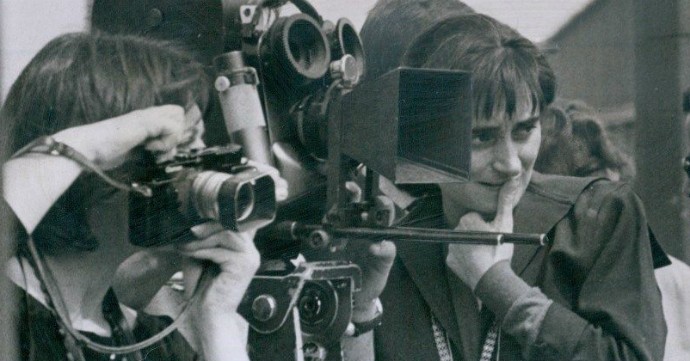
“Any society that is silencing its women has no future.” – Hafsat Abiola
“Media images contribute greatly to how we think about ourselves in relation to others. When marginalized groups in society are absent from the stories a nation tells about itself, or when the media images are rooted primarily in stereotype, inequality is normalized and is more likely to be reinforced over time through our prejudices and practices.” – Dawn Porter, director of Gideon’s Army
“When, however, one reads of a witch being ducked, of a woman possessed by devils, of a wise woman selling herbs, or even of a very remarkable man who had a mother, then I think we are on the track of a lost novelist, a suppressed poet, of some mute and inglorious Jane Austen, some Emily Bronte who dashed her brains out on the moor or mopped and mowed about the highways crazed with the torture that her gift had put her to. Indeed, I would venture to guess that Anon, who wrote so many poems without signing them, was often a woman.” ― Virginia Woolf, A Room of One’s Own
At last year’s Sundance Film Festival, more than 40% of the documentaries screened were directed or produced by women, though this is not the industry norm. These numbers dwindle when the catalog is expanded beyond the mountains of Park City. Unlike the absence of women from the lineage other art forms that Virginia Woolf implies in A Room of One’s Own, the voices of female filmmakers are rightfully an essential part of film history and have been heralded all the way back to Leni Riefenstahl through Agnès Varda, Shirley Clarke, Barbara Kopple, Naomi Kawase and a lengthy list of other incredible artists who’ve embraced their femininity as an asset to challenge the world around them and push cinematic and cultural boundaries by obliterating expectations of effeminate chastity.
Carrying on the documentary traditions of their directorial foremothers, female filmmakers today are forging their own paths to cinematic truth by excavating issues ranging from family and child development to nature preservation, aging, and the list goes on, all with sharp intellectual engagement and a natural maternalism, yet this natural affection for their subjects does not define them as artists. Rather, they wield it as an additional dimension of expression that enriches their creative vision with something uniquely female – something cinemas everywhere could always use a little more of.
These six films, each politically poignant and deeply emotional works, were directed by female filmmakers currently working today.
Stories We Tell (Sarah Polley)
A highly original documentary that explores how we construct our own reality through stories. Sarah Polley’s family and friends weave different narratives into a complex portrait of her mother who died when Sarah was eleven.
The Crash Reel (Lucy Walker)
U.S. champion snowboarder Kevin Pearce takes a near-fatal crash. This is the story of his recovery, which exposes the irresistible but potentially fatal appeal of extreme sports.
Brooklyn Castle (Katie Dellamaggiore)
Tells the stories of five members of the chess team from an inner city junior high school that has won more national championships than any other in the country, and follows the challenges these kids face in their personal lives as well as on the chessboard.
Advanced Style (Lina Plioplyte)
Based on Ari Seth Cohen’s famed blog of the same name, this documentary paints intimate and colorful portraits of seven independent, stylish New York women aged 62 to 95 who are challenging conventional ideas about beauty, aging, and Western’s culture’s increasing obsession with youth.
Blackfish (Gabriela Cowperthwaite)
The story of Tilikum, a performing killer whale that killed several people while in captivity. The film shows just how nature can get revenge on man when pushed to its limits.
Manufactured Landscapes (Jennifer Baichwal)
An unconventional film told through the spectacular, large-scale photos by Edward Burtynsky as he visits ‘manufactured landscapes’ – quarries, recycling yards, factories, mines, dams – in China and beyond

Of the many documentaries whose authorship stems from or extends into the literary world, these six films will, as Kafka suggests they should, wake you up, move you, and still thoroughly entertain. May these excellent documentaries, varying vastly in theme and topic, serve as cinematic extensions of their esteemed written counterparts, which have also been listed below.
Project Nim
The story of a chimpanzee who was the focus of a 1970′s experiment to show that apes could learn to communicate through sign language if raised and nurtured like a human child. Corresponding Book: “Nim Chimpsky: The Chimp Who Would Be Human” by Elizabeth Hess
The Devil Came on Horseback
Follows former US Marine Captain Brian Steidle as he documents the genocide in Darfur, Sudan. Upon his return to the US Steidle campaigns for international intervention and becomes frustrated by the inaction of politicians back home. Corresponding Book: “The Devil Came on Horseback: Bearing Witness to the Genocide in Darfur” by Gretchen Steidle Wallace and Brian Steidle
Restrepo
Chronicles the 15-month deployment of a U.S. soldier platoon sent into the deadliest valley of Afghanistan. Corresponding Book: “War” by Sebastian Junger
The Kid Stays in the Picture
Based on Robert Evans’ autobiography, the film traces the rise and fall of one of Hollywood’s most legendary and admired producers with humour, honesty and an enormous amount of style. Corresponding Book: “The Kid Stays in the Picture: A Notorious Life” by Robert Evans
American Promise
A 13-year documentary journey following two black American boys from kindergarten through high school graduation at one of the most prestigious private schools in the U.S. Corresponding Book: “Promises Kept: Raising Black Boys to Succeed in School and in Life” by Michele Stephenson and Joe Brewster
Life Itself
Explores Roger Ebert’s legacy, including his Pulitzer Prize-winning film criticism at the Chicago Sun-Times, as well as his his eruptive relationship with Gene Siskel, both of which culminated in his ascension as one of the most influential cultural voices in America. Corresponding Book: “Life Itself” by Roger Ebert